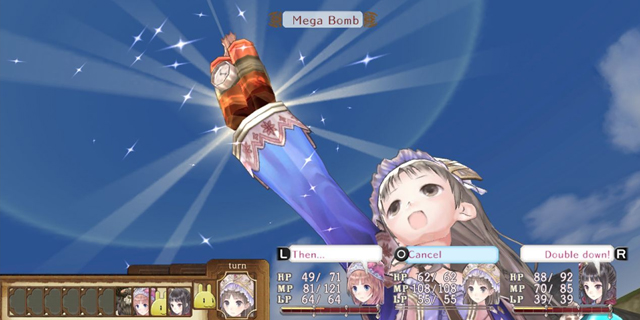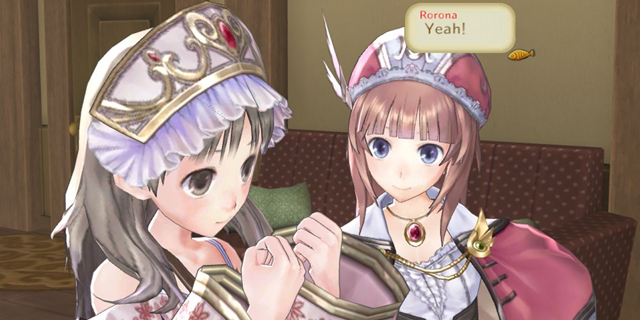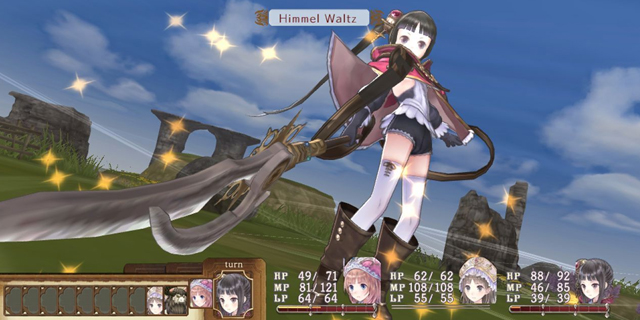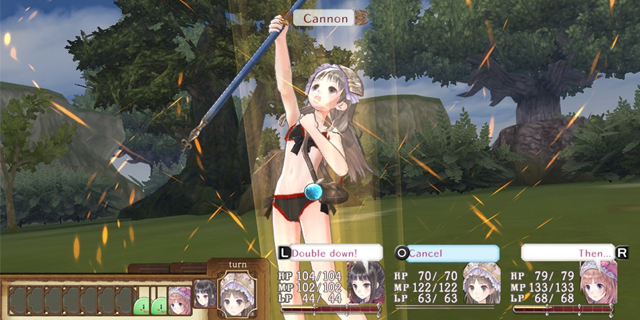
The Atelier series has always had a bit of difficulty making its way across the pond. Starting from humble origins on the Sega Saturn, it never saw an English release until seven years later with Atelier Iris on the PlayStation 2. These days, the series is finally seeing regular localizations. The latest in the series is Atelier Totori Plus, a Vita port of the PS3 original of the same name, with a little extra content thrown in for good measure. Is this new port worth your time, or is it just more of the same?
Generally, the kind of audience who would really love the Atelier series already know exactly what they’re getting. By whom I mean die-hard JRPG fans, and by which I mean an RPG with unabashedly Japanese design, artistic direction and narrative sensibilities. You’re getting the whole package here, and whether that is the best or worst thing in the world depends entirely on your opinion on the genre as a whole. The main focus of the Atelier series is and has always been alchemy. The alchemy system itself is very flexible, allowing one to combine various materials beyond the base requirements for a recipe in order to add extra effects, making resource management a strict priority. This sense is compounded by the fact that you must also manage your time; each action you take in the game eats up a considerable amount of time, and it is essential to keep your eye on the clock so as not to miss important deadlines.

The games use a quest structure that requires you to gather ingredients either by scavenging, buying or hunting, and then using said ingredients to synthesize various items for others. This structure makes up the brunt of the game’s play time, so if gathering and crafting sounds appealing to your gaming sensibilities, then I’m sure you will enjoy Atelier Totori. This structure, combined with the day-by-day passage of time, allows the player to easily get into a groove and keep playing for hours.
The fighting consists of your standard turn-based battle system, with only a few minor areas of differentiation from the norm, such as an on-the-fly blocking system. There’s really nothing new here, except for this: the main character, Totori, isn’t a very good fighter. In fact, it’s highly recommended to have her not use her normal attacks at all, and instead have everyone else fight for you. Totori’s main function in battle is to fight using items synthesized beforehand, such as explosives. The best analog I can think of to measure the game against in this regard is Recettear: An Item Shop’s Tale, in that the main character takes a backseat to combat in the interest of scavenging. I would say that the fast, action-heavy combat of Recettear makes a better complement to the relatively lax item management component than the slow, turn-based combat of Atelier. That’s not to say it doesn’t work; in fact, if you’re looking for an RPG that evokes the same relaxing vibe found in the Rune Factory series, then this may be well-suited for your tastes.

There are a few other problems holding the combat back. For one, the game always felt like it was pushing me out of my comfort zone. Every time you unlock a new area, the quest list is refreshed to primarily make use of materials exclusively available in the new area. This wouldn’t be a problem, except that you usually unlock new areas just as you’re only warming up to the caliber of enemies in the current one, and since there are much fewer quests to do in the old area, you are essentially forced out by means of obsolescence. It’s not a huge problem, but it does make the pacing of the game a bit more jarring, which is especially bad given the aforementioned emphasis on creating a laid-back JRPG.
Atelier Totori’s adherence to a light, watercolor visual aesthetic meshes with its tone, creating a soothing ambiance that feels welcoming and simple. The environments, while noticeably low-fidelity, compensate by being composed well, having an almost dreamlike quality about them. Due to the game’s odd decision to restrict camera movement to only zooming in and out, navigating is occasionally a chore.
The character designs embody that familiar gaudy-yet-appealing overdesigned anime style that is distinctly Japanese. However, the reliance on half-naked women is just a bit more pronounced in this game, pushing it over the line from silly to downright creepy. This is compounded by the fact that some of the new content for Atelier Totori Plus includes swimsuit and devil costumes. The audio is soothing, yet unfortunately uninspired, using lighthearted tones to achieve the same goal of calming the player. It is not the kind of music you will remember, however; it amounts to little more than aural fluff.

Compared to the original, Plus’ biggest change is its most obvious: portability. Very little was lost in translation; unfortunately, the port does suffer from some occasional frame rate dips. As for new content, there isn’t a great deal more that what we have already seen. The extra characters that appeared in the original as DLC are included in Plus, and there are some new outfits for Totori to wear and a new dungeon to explore.
Atelier Totori Plus is a game that unashamedly caters to its niche every chance it gets. That doesn’t mean it’s a poor game, though; the fact that it posesses such a clear vision for what it wants to be is actually quite admirable, since it mostly seems to pull it off. It helps that the Atelier games have a different focus than most of the genre and make for a nice change of pace. Whether the game is right for you can be determined by a cursory self-examination of your own gaming tastes. The game does well what you expect it to do well, and while it does little else, it manages to be efficient in its aims.
Pros: Deep alchemy system, pleasant environments, solid port job
Cons: Occasional technical issues, limited appeal, little new content



















